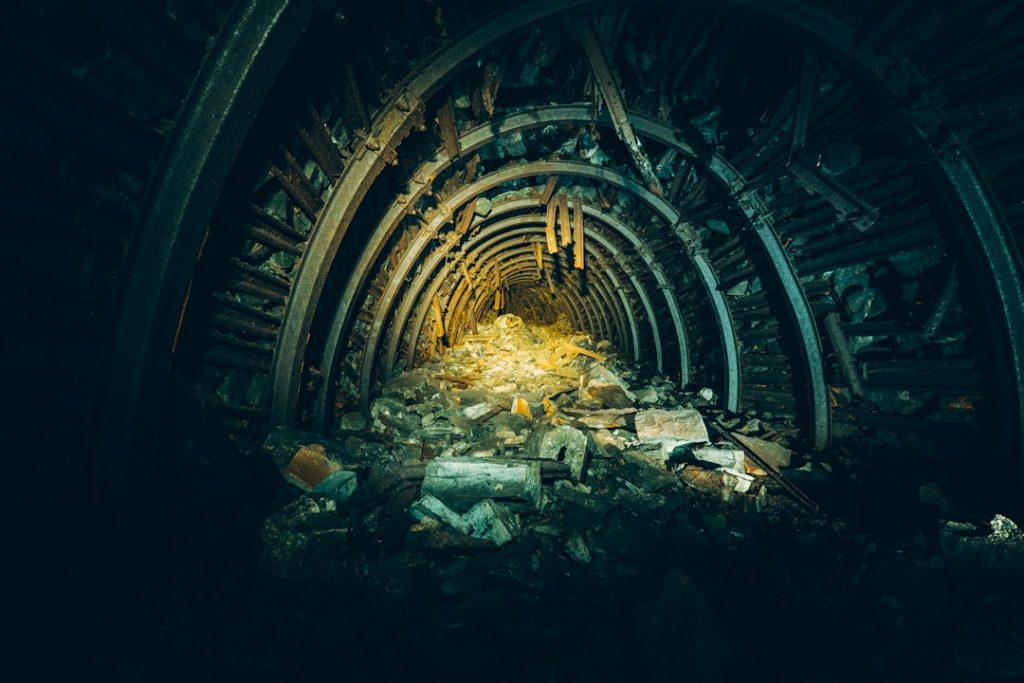Coal and briquettes are widely used as sources of energy in various industries and households around the world. Coal is a fossil fuel that has been used for centuries to generate heat and electricity, while briquettes are compressed blocks of coal dust or other combustible materials. Both coal and briquettes are essential for meeting the energy demands of a growing global population.
The handling of coal and briquettes involves various processes such as mining, transportation, storage, and combustion. These processes can have significant environmental impacts if not managed properly. Traditional methods of coal and briquette handling often result in air and water pollution, deforestation, and greenhouse gas emissions. As the demand for energy continues to rise, it is crucial to find sustainable and environmentally friendly solutions for coal and briquette handling.
Environmental Impact of Conventional Coal and Briquette Handling
Conventional coal and briquette handling methods have a range of negative environmental impacts. The mining of coal can lead to habitat destruction, soil erosion, and water pollution. Additionally, the transportation of coal and briquettes via trucks, trains, and ships contributes to air pollution and greenhouse gas emissions. Once the coal and briquettes reach their destination, they are often stored in open-air stockpiles, leading to dust pollution and the leaching of harmful chemicals into the soil and water.
When coal and briquettes are combusted for energy production, they release pollutants such as sulfur dioxide, nitrogen oxides, and particulate matter into the atmosphere. These pollutants can contribute to smog formation, acid rain, and respiratory illnesses in humans. Furthermore, the combustion of coal and briquettes is a major source of carbon dioxide emissions, which are a leading cause of global climate change.
Green Solutions for Coal and Briquette Handling
In recent years, there has been a growing emphasis on developing green solutions for coal and briquette handling to mitigate their environmental impact. One such solution is the use of advanced technologies for cleaner coal mining and transportation. This includes the implementation of dust suppression systems, efficient conveyor belts, and electric vehicles to reduce air and water pollution during the handling and transportation of coal and briquettes.
Another green solution is the adoption of sustainable storage practices for coal and briquettes. This involves the construction of covered storage facilities to prevent dust pollution and the implementation of measures to prevent the leaching of harmful chemicals into the environment. Additionally, the use of alternative materials such as biomass briquettes or renewable energy sources can help reduce the reliance on traditional coal and briquettes, thereby lowering their environmental impact.
Advantages of Green Solutions
| Advantages of Green Solutions |
|---|
| 1. Environmental Benefits |
| 2. Cost Savings |
| 3. Health Benefits |
| 4. Resource Efficiency |
| 5. Innovation and Job Creation |
The implementation of green solutions for coal and briquette handling offers several advantages. Firstly, these solutions can significantly reduce the environmental impact of coal and briquette handling processes, leading to cleaner air, water, and soil. By adopting advanced technologies and sustainable practices, the negative effects of coal mining, transportation, storage, and combustion can be minimized, thereby protecting ecosystems and human health.
Furthermore, green solutions for coal and briquette handling can contribute to climate change mitigation by reducing greenhouse gas emissions. By promoting cleaner coal mining practices and transitioning to renewable energy sources, the carbon footprint associated with coal and briquette handling can be significantly reduced. This is crucial for meeting global climate targets and transitioning towards a more sustainable energy future.
Implementing Green Solutions in Coal and Briquette Handling
The implementation of green solutions for coal and briquette handling requires collaboration between governments, industries, and communities. Policies and regulations that promote cleaner coal mining practices, sustainable transportation methods, and efficient storage facilities are essential for driving the adoption of green solutions. Governments can also incentivize the use of renewable energy sources and provide funding for research and development of advanced technologies for coal and briquette handling.
Industry stakeholders play a crucial role in implementing green solutions by investing in cleaner technologies, adopting sustainable practices, and promoting transparency in their supply chains. This includes investing in renewable energy infrastructure, improving energy efficiency in coal mining operations, and implementing measures to reduce air and water pollution during transportation and storage. Additionally, community engagement and education are vital for raising awareness about the environmental impacts of conventional coal and briquette handling and promoting the adoption of green solutions.
Case Studies of Successful Green Solutions

Several case studies demonstrate the successful implementation of green solutions for coal and briquette handling around the world. In China, the government has invested in advanced technologies for cleaner coal mining, such as the use of water mist cannons to suppress dust emissions in coal mines. This has led to a significant reduction in air pollution and improved working conditions for miners. Additionally, China has been investing heavily in renewable energy sources such as wind and solar power to reduce its reliance on coal for electricity generation.
In India, the use of biomass briquettes as an alternative to traditional coal has gained traction as a green solution for household cooking and heating. This has helped reduce deforestation for fuelwood and lowered indoor air pollution in rural communities. Furthermore, India has been investing in cleaner transportation methods for coal, such as the use of conveyor belts instead of trucks, to minimize air pollution during coal transportation.
Conclusion and Future Outlook for Green Solutions in Coal and Briquette Handling
In conclusion, the environmental impact of conventional coal and briquette handling is significant, but there are viable green solutions that can mitigate these impacts. By adopting advanced technologies, sustainable practices, and renewable energy sources, the negative effects of coal and briquette handling can be minimized. The implementation of green solutions requires collaboration between governments, industries, and communities to drive policy changes, investment in cleaner technologies, and public awareness.
Looking ahead, the future outlook for green solutions in coal and briquette handling is promising. As the global demand for energy continues to rise, there is a growing momentum towards transitioning to cleaner energy sources and sustainable practices. Governments are increasingly recognizing the importance of reducing the environmental impact of coal and briquette handling through policy interventions and investment in renewable energy infrastructure. Industry stakeholders are also realizing the benefits of adopting green solutions for their operations in terms of environmental stewardship and long-term sustainability.
In conclusion, while the environmental impact of conventional coal and briquette handling is significant, there are viable green solutions that can mitigate these impacts. By adopting advanced technologies, sustainable practices, and renewable energy sources, the negative effects of coal and briquette handling can be minimized. The implementation of green solutions requires collaboration between governments, industries, and communities to drive policy changes, investment in cleaner technologies, and public awareness. Looking ahead, the future outlook for green solutions in coal and briquette handling is promising as there is a growing momentum towards transitioning to cleaner energy sources and sustainable practices. Governments are increasingly recognizing the importance of reducing the environmental impact of coal and briquette handling through policy interventions and investment in renewable energy infrastructure. Industry stakeholders are also realizing the benefits of adopting green solutions for their operations in terms of environmental stewardship and long-term sustainability.
If you’re interested in learning more about distinctive coal briquette products standing out in the market, check out this article on Almassiyah. It provides valuable insights into the latest trends and innovations in the coal and briquette industry, offering a glimpse into the future of eco-friendly coal and briquette handling.
FAQs
What is eco-friendly coal and briquette handling?
Eco-friendly coal and briquette handling refers to the process of managing and transporting coal and briquettes in a way that minimizes environmental impact. This can include using sustainable packaging, reducing emissions during transportation, and implementing efficient handling practices.
Why is eco-friendly coal and briquette handling important?
Eco-friendly coal and briquette handling is important because it helps to reduce the environmental impact of coal and briquette usage. By implementing sustainable handling practices, we can minimize pollution, conserve natural resources, and protect ecosystems.
What are some eco-friendly coal and briquette handling practices?
Some eco-friendly coal and briquette handling practices include using renewable packaging materials, optimizing transportation routes to reduce emissions, implementing efficient loading and unloading processes, and investing in technologies that minimize dust and spillage.
How can eco-friendly coal and briquette handling benefit the environment?
Eco-friendly coal and briquette handling can benefit the environment by reducing air and water pollution, conserving natural resources, minimizing habitat destruction, and lowering greenhouse gas emissions. These practices contribute to a more sustainable and environmentally friendly approach to coal and briquette usage.
What are the challenges of implementing eco-friendly coal and briquette handling?
Challenges of implementing eco-friendly coal and briquette handling include the initial investment in sustainable technologies and infrastructure, the need for industry-wide collaboration, and the potential for increased operational costs. However, the long-term environmental and social benefits outweigh these challenges.



